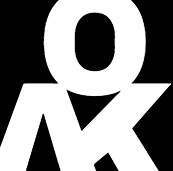Any innovative idea, concept, product, service, can be only as good as the People carrying it.
This, alone, should push the
Institutions to recognize that the success of their organization heavily
depends on their capacity to attract, develop, and retain talents,
aiming at ensuring that the right people are in the right positions at
the right time to help achieve the larger objectives of the business.
The competitivity that surrounds
the current world, along with new generations that keep on challenging
the traditional ways to operate is pushing us to look at Talent
Management in a new light.
Institutions no longer carry the
only duty to reward high performers considered as Talents but they also
have to take full responsibility to create and nurture the environment
in which Individuals can be, become or strive as Talents.
It has become Companies’ mission
to approach Talent Management with agility and creativity to cater to a
very diverse population of Talents that can only be leveraged through
tailor made methods. The one size fits all does no longer work.
Agility to navigate between
different generations representing different definitions of what Talent
looks like but also what Talent requires. From a traditional, almost
patriarchal model , to a digital native Gen Z model, there is great
challenge to manage these extrem polarities (and everything in between)
to cohabit together but also to have enough tools to water their talent
and give them all a sense of purpose and fulfillment that will resonate
with their aspirations.
Although one can always lean on
the well established fundations to execute a conventional Talent
Management strategy, now could be the time to take into consideration
the reality of our current society, its contemporary norms and trends
and their influence on a generation that comes with a set of different
drives.
Financials elements and career
advancements are undoubtedly seen as primary components but over the
last decade there has been a raise of factors more oriented towards
work life balance, work flexibility (remote, hybrid), agility in the
work place with the possibility to try out different roles horizontally,
perks of different nature.
The message is clear, Talent
Management can survive practicing the technics of the good old days
but to strive, Companies will have to be fluid.


